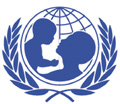
Warning to India, United Nations Children’s Fund (UNICEF) has said that despite of robust economic growth, India has failed to provide basic healthcare for its poorest children and child mortality rates remain high, a UNICEF report released on Tuesday said.
According to the report: pneumonia, diarrhoea and malnutrition are the major causes of child death in the region, while one in every three women is underweight and delivering underweight children too, who are 20 times more in risk to die in infancy than healthy babies.
The report of UNICEF came while scanning the latest trends in child and maternal health in Asia. UNICEF has also warned Asia’s most powerful country and fastest emerging country, China, for not having adequate improvement so far in the basic health and nutrition in children and mothers.
Releasing its report entitled ‘State of Asia-Pacific’s Children 2008’ on Tuesday UNICEF said, “Unless India makes major achievements in health, nutrition, water and sanitation, education, gender equality and child protection, global efforts at reaching the Millennium Development Goals will fail.”
“China too needs to make significant strides to regain early progress it made in child survival.” added the UN organisation.
According to UNICEF stats, in 2006, nearly 2.5 million children died in both countries, mainly in India, which was one third of all child death. India’s infant mortality was 2.1-million while China had 415000 child deaths in record.
‘It is then, when regions economic growth is fastest since 1990 and many destitute have eased from poverty’, UNICEF comments.
However, the world’s foremost children welfare organisation have also stated in terms of India, ‘country has done significant progress in human development and child rights, but this achievement has been overshadowed by deepening disparities in that health care often fails to reach the poorest.
The difference between rich and poor is rising towards danger mark in the region, as UNICEF cited, by adding that vast inequities in income, geography, gender and ethnicity are obstructing the way of children surviving, thriving, and putting both mother and children at risk of increasing poverty.
“Avoidable diseases like pneumonia and diarrhoea and a high rate of malnutrition are the major causes of child death in the region,” UNICEF said, while experts added that poverty, ignorance and poor feeding practices are being the prime reasons for high rates of malnourished children.
The report also pointed out the distressing trend in South-Asia, as the region only spends 1.1 percent on public health expenditure that is far below in comparison to 1.9 percent of remaining Asia Pacific and an average of 5.1 percent in rest of the world.
Furthermore, the report underscores effect of the rising trend of privatisation in service sector. It said, as more and more services within countries are privatised and the government’s share of health budget diminishes, public facilities become more run down and health workers leave for better paid jobs in the private sector or outside the country.
In suggestion to Asian countries, the UNICEF report also recommends, “Without improved health care, 13 of the Asia-Pacific countries will struggle to reduce the child mortality rates by two thirds.”
Moreover, for reducing child mortality rate, it recommends further:
• To focus health resources on areas where the rates of child mortality are highest;
• To strengthen health systems by involving communities in preventative public health interventions;
• Provide ongoing care from the beginning of pregnancy through the birth of a child and into adolescence;
• Boost public health care spending by at least 2 percent (based on 2001 levels) to make quality public health care services affordable to the poorest people.
• Tackle ongoing gender disparity by educating communities so they are better able to direct household resources towards the welfare of children.
|
|
Read More: South Goa


Comments: